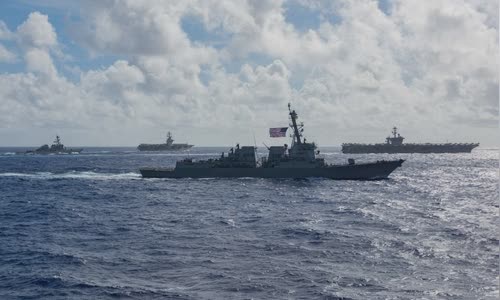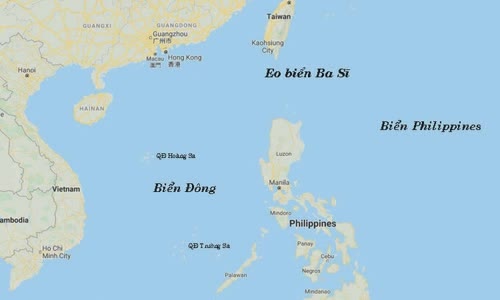The Ba Si Strait, one of the gateways to the South China Sea, sees a series of military actions that could raise the US-China strategic competition.
Six reconnaissance planes and two American tankers appeared in the skies of the Ba Si Strait, on the southern island of Taiwan, before entering the South China Sea on July 3.

Two groups of US aircraft carriers exercise in the Philippine Sea on June 23 Photo: US Navy
Dozens of Chinese fighter jets and bombers also entered the air defense identification zone (ADIZ) southwest of Taiwan and flew over the Ba Si Canal, heading to the South China Sea in June. Observers say this is a sign.
The Ba Si Strait is located between Y'Ami Island in the extreme north of the Philippines and Orchid Island in Taiwan, considered an important route for US and Chinese military activities in the region.
An unnamed security source in Taipei said US reconnaissance aircraft in the Strait of the past few days may be conducting a joint hunting mission in the area, while supporting the exercises.
Meanwhile, Chinese J-15 fighters appear to be training to take off on the Shandong aircraft carrier in the Yellow Sea in June. A Chinese submarine last month also approached Japan and was heading
"This move prompted the United States to deploy submarine-hunting aircraft and warships, and also conducted operations to prevent and control enemy submarines," said Su Tzu-yun, a scholar at the Institute for National and Security Studies.
Experts assess both Washington and Beijing are flaunting military power in the region, but their attempts are very different.

Location of the Ba Si Strait at the gateway of the South China Sea Photo: Google Maps
Alexander Huang Chieh-cheng, professor of strategic and international relations studies at Tamkang University in Taipei, said that the US is seeking to maintain a "forward presence", a long-term force deployment operation in the country.
"Both the United States and China have stepped up their presence in the context of increased strategic competition between the two countries, if not escalating rapidly," said Professor Huang.
Location of the Ba Si Strait at the gateway of the South China Sea.
In case of necessity, the United States can rotate its forces, maintain a strong naval and air presence in the region.
According to Huang, both Washington and Beijing are undertaking missions without direct communication to deliver the message, prompting both sides to consider a military presence as a strategic means of communication in addition to public statements.
"The recent move to intensify military operations on both sides could be an attempt to familiarize the region in the event of a conflict," Huang said.



 Carmen Bxc Loyd
Carmen Bxc Loyd







